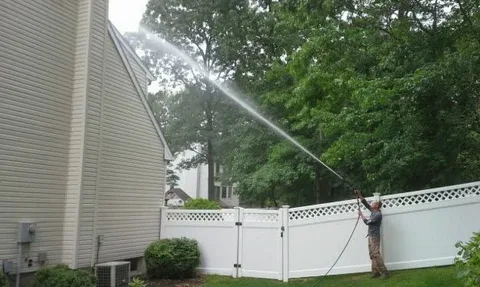Ask any professional cleaner what their most underrated tool is, and you might be surprised when they say: the pressure washer nozzle chart. At first glance, it’s just a grid of numbers and colors. But dig deeper, and it becomes clear this chart is what separates average results from flawless finishes.
Let’s explore why understanding this chart matters—and how it helps you clean smarter, not harder.
What Is a Pressure Washer Nozzle Chart, Really?
If you’ve ever held a power washer and switched nozzles, you’ve probably seen how drastically the spray pattern can change. The nozzle chart explains those differences by pairing PSI (pressure), GPM (flow), orifice size, and spray angle with color-coded tips.
Each combination delivers a different cleaning intensity. The chart makes it easy to match your washer’s specs with the nozzle that will perform best.
For example:
- Red tips (0°) are ultra-concentrated and meant for extreme grime.
- Yellow (15°) balances pressure and coverage—great for prepping concrete or stripping paint.
- Green (25°) is your everyday workhorse.
- White (40°) is for gentle washing.
- Black (65°) is for soap application.
Why It’s More Than Just Spray Angles
Spray angle is only part of the story. The chart also helps you match your washer’s pressure and flow rate with the correct nozzle size. If the orifice is too small, your machine could be overworked. Too big, and the cleaning power drops.
A 3.5 nozzle might work perfectly for a 3000 PSI / 3.0 GPM washer, while a 4.5 nozzle suits a 4000 PSI / 4.0 GPM setup.
Get it wrong, and you could damage your equipment or waste gallons of water with poor results.
For clarity, this full pressure washer nozzle chart breaks it all down by nozzle number, tip color, and performance level.
How Professionals Use the Chart in the Field
Let’s say you’re pressure washing a parking lot. You’ll likely start with a 15° yellow tip for concrete grime. If there’s paint, a red tip might come into play—but only on areas where surface damage isn’t a concern.
Then for rinsing? Switch to the green or white tip. And when it’s time for a detergent pre-soak, pull out the black tip.
Without the chart, trial and error wastes time. With it, you’re executing with precision.
Tools of the Trade: Beyond the Standard Nozzle Tips
Many pros upgrade their setups with turbo nozzles, which spin a 0° jet in a circular motion to increase area coverage without sacrificing intensity. But even turbo nozzles are based on the same PSI and GPM logic that governs the standard chart.
You’ll also see adjustable nozzles, soap cannons, and long-reach wands—all of which are more effective when you know the right nozzle size and spray pattern to begin with.
Avoid These Common Mistakes
- Using high-pressure tips on delicate surfaces like car paint or vinyl siding
- Choosing a nozzle based only on color, without checking PSI compatibility
- Not replacing worn nozzles, which can alter spray pattern and reduce efficiency
The Real Payoff: Efficiency and Protection
Time is money—especially when you’re cleaning commercially. The wrong nozzle slows you down, causes damage, or forces you to redo work.
Understanding the pressure washer nozzle chart means faster, safer cleaning. It means knowing when to be aggressive and when to dial it back.
Still unsure what nozzle to use with your specific washer specs? This definitive pressure washer nozzle chart from HiLow Solutions is worth bookmarking.
Final Thoughts
Every pressure washer comes with power, but not every user knows how to harness it properly. That’s where the nozzle chart comes in. It’s not just a recommendation—it’s your roadmap to better results.
So the next time you’re choosing between red and green, or wondering if that nozzle will overload your pump, consult the chart. Because smart cleaning starts with the right tip.







